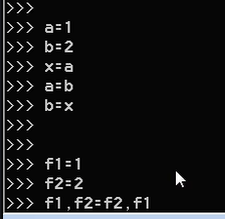python学习day-9 常用模块与包

import os def file_handler(backend_data,res=None,type='fetch'): if type == 'fetch': with open('haproxy.conf','r') as read_f: tag=False ret=[] for read_line in read_f: if read_line.strip() == backend_data: tag=True continue if tag and read_line.startswith('backend'): # tag=False break if tag: print('\033[1;45m%s\033[0m' %read_line,end='') ret.append(read_line) return ret elif type == 'change': with open('haproxy.conf', 'r') as read_f, \ open('haproxy.conf_new', 'w') as write_f: tag = False has_write = False for read_line in read_f: # server if read_line.strip() == backend_data: tag = True continue if tag and read_line.startswith('backend'): tag = False if not tag: write_f.write(read_line) else: if not has_write: for record in res: write_f.write(record) has_write = True os.rename('haproxy.conf', 'haproxy.conf.bak') os.rename('haproxy.conf_new', 'haproxy.conf') os.remove('haproxy.conf.bak') def fetch(data): # print('\033[1;43m这是查询功能\033[0m') # print('\033[1;43m用户数据是\033[0m',data) backend_data='backend %s' %data return file_handler(backend_data) def add(): pass def change(data): # print('这是修改功能') # print('用户输入的数据是',data) backend=data[0]['backend'] #文件当中的一条记录 www.oldboy1.org backend_data='backend %s' %backend #backend www.oldboy1.org # server 2.2.2.4 2.2.2.4 weight 20 maxconn 3000 old_server_record='%sserver %s %s weight %s maxconn %s\n' %(' '*8,data[0]['record']['server'], data[0]['record']['server'], data[0]['record']['weight'], data[0]['record']['maxconn']) new_server_record = '%sserver %s %s weight %s maxconn %s\n' % (' ' * 8, data[1]['record']['server'], data[1]['record']['server'], data[1]['record']['weight'], data[1]['record']['maxconn']) print('用户想要修改的记录是',old_server_record) res=fetch(backend) #fetch('www.oldboy1.org') print('来自change函数--》',res) if not res or old_server_record not in res: return '你要修改的记录不存在' else: index=res.index(old_server_record) res[index]=new_server_record res.insert(0,'%s\n' %backend_data) file_handler(backend_data,res=res,type='change') def delete(): pass if __name__ == '__main__': msg=''' 1:查询 2:添加 3:修改 4:删除 5:退出 ''' msg_dic={ '1':fetch, '2':add, '3':change, '4':delete, } while True: print(msg) choice=input('请输入你的选项:').strip() if not choice:continue if choice == '5':break data=input('请输入你的数据:').strip() if choice != '1': data=eval(data) res=msg_dic[choice](data) print('最终结果是--》',res) # [{'backend':'www.oldboy1.org','record':{'server':'2.2.2.4','weight':20,'maxconn':3000}},{'backend':'www.oldboy1.org','record':{'server':'2.2.2.5','weight':30,'maxconn':4000}}]
查询修改操作代码、tag的用法
1.在python文件写一些不会运行的函数模块等,要运行的代码写在 if _name_==‘_main_ ’下边 这是一种规范
2.交换

3.解压

4.os
os.remove("a.txt","b.txt")
6._name_有两种用法
1.当文件被调用,并没有被执行时 _name_!=_main_ _name_等于模块名
当文件当作脚本执行时,_name_=_main_
可以用if(_name_=="_main_") 用于被调用文件的测试
5.文件操作
with open('haproxy.conf', 'r') as read_f, \
open('haproxy.conf_new', 'w') as write_f:
------------------------------------------------------------------------------------------------------------------
http://www.cnblogs.com/linhaifeng/articles/6379069.html#_label1
一、模块
1.一个模块就是一个包含了一组功能的python文件,比如spam.py,模块名为spam,可以通过import spam使用。
模块可以分为四个通用类别:
1 使用python编写的.py文件
2 已被编译为共享库或DLL的C或C++扩展
3 把一系列模块组织到一起的文件夹(注:文件夹下有一个__init__.py文件,该文件夹称之为包)
4 使用C编写并链接到python解释器的内置模块
2.优点
1、从文件级别组织程序,更方便管理
随着程序的发展,功能越来越多,为了方便管理,我们通常将程序分成一个个的文件,这样做程序的结构更清晰,方便管理。这时我们不仅仅可以把这些文件当做脚本去执行,还可以把他们当做模块来导入到其他的模块中,实现了功能的重复利用
2、拿来主义,提升开发效率
同样的原理,我们也可以下载别人写好的模块然后导入到自己的项目中使用,这种拿来主义,可以极大地提升我们的开发效率
3.调用模块的方式
import spam
import sys,os,re 一行引入多个模块
from spam import read1,read2
二、包
1.包就是一个包含有__init__.py文件的文件夹,所以其实我们创建包的目的就是为了用文件夹将文件/模块组织起来
需要强调的是:
1. 在python3中,即使包下没有__init__.py文件,import 包仍然不会报错,而在python2中,包下一定要有该文件,否则import 包报错
2. 创建包的目的不是为了运行,而是被导入使用,记住,包只是模块的一种形式而已,包的本质就是一种模块
2.包的调用
import glance.db.models
from glance.db import models
3.常用模块
①时间模块
在Python中,通常有这几种方式来表示时间:
- 时间戳(timestamp):通常来说,时间戳表示的是从1970年1月1日00:00:00开始按秒计算的偏移量。我们运行“type(time.time())”,返回的是float类型。
- 格式化的时间字符串(Format String)
- 结构化的时间(struct_time):struct_time元组共有9个元素共九个元素:(年,月,日,时,分,秒,一年中第几周,一年中第几天,夏令时)
1 --------------------------转换时间
2 # localtime([secs])
3 # 将一个时间戳转换为当前时区的struct_time。secs参数未提供,则以当前时间为准。
4 time.localtime()
5 time.localtime(1473525444.037215)
6
7 # gmtime([secs]) 和localtime()方法类似,gmtime()方法是将一个时间戳转换为UTC时区(0时区)的struct_time。
8
9 # mktime(t) : 将一个struct_time转化为时间戳。
10 print(time.mktime(time.localtime()))#1473525749.0
11
12
13 # strftime(format[, t]) : 把一个代表时间的元组或者struct_time(如由time.localtime()和
14 # time.gmtime()返回)转化为格式化的时间字符串。如果t未指定,将传入time.localtime()。如果元组中任何一个
15 # 元素越界,ValueError的错误将会被抛出。
16 print(time.strftime("%Y-%m-%d %X", time.localtime()))#2016-09-11 00:49:56
17
18 # time.strptime(string[, format])
19 # 把一个格式化时间字符串转化为struct_time。实际上它和strftime()是逆操作。
20 print(time.strptime('2011-05-05 16:37:06', '%Y-%m-%d %X'))
21 #time.struct_time(tm_year=2011, tm_mon=5, tm_mday=5, tm_hour=16, tm_min=37, tm_sec=6,
22 # tm_wday=3, tm_yday=125, tm_isdst=-1)
23 #在这个函数中,format默认为:"%a %b %d %H:%M:%S %Y"。
② random模块
import random
print(random.random())#(0,1)----float 大于0且小于1之间的小数
print(random.randint(1,3)) #[1,3] 大于等于1且小于等于3之间的整数
print(random.randrange(1,3)) #[1,3) 大于等于1且小于3之间的整数
print(random.choice([1,'23',[4,5]]))#1或者23或者[4,5]
print(random.sample([1,'23',[4,5]],2))#列表元素任意2个组合
print(random.uniform(1,3))#大于1小于3的小数,如1.927109612082716
item=[1,3,5,7,9]
random.shuffle(item) #打乱item的顺序,相当于"洗牌"
print(item)
三。os模块
os模块是与操作系统交互的一个接口
os.getcwd() 获取当前工作目录,即当前python脚本工作的目录路径 os.chdir("dirname") 改变当前脚本工作目录;相当于shell下cd os.curdir 返回当前目录: ('.') os.pardir 获取当前目录的父目录字符串名:('..') os.makedirs('dirname1/dirname2') 可生成多层递归目录 os.removedirs('dirname1') 若目录为空,则删除,并递归到上一级目录,如若也为空,则删除,依此类推 os.mkdir('dirname') 生成单级目录;相当于shell中mkdir dirname os.rmdir('dirname') 删除单级空目录,若目录不为空则无法删除,报错;相当于shell中rmdir dirname os.listdir('dirname') 列出指定目录下的所有文件和子目录,包括隐藏文件,并以列表方式打印 os.remove() 删除一个文件 os.rename("oldname","newname") 重命名文件/目录 os.stat('path/filename') 获取文件/目录信息 os.sep 输出操作系统特定的路径分隔符,win下为"\\",Linux下为"/" os.linesep 输出当前平台使用的行终止符,win下为"\t\n",Linux下为"\n" os.pathsep 输出用于分割文件路径的字符串 win下为;,Linux下为: os.name 输出字符串指示当前使用平台。win->'nt'; Linux->'posix' os.system("bash command") 运行shell命令,直接显示 os.environ 获取系统环境变量 os.path.abspath(path) 返回path规范化的绝对路径 os.path.split(path) 将path分割成目录和文件名二元组返回 os.path.dirname(path) 返回path的目录。其实就是os.path.split(path)的第一个元素 os.path.basename(path) 返回path最后的文件名。如何path以/或\结尾,那么就会返回空值。即os.path.split(path)的第二个元素 os.path.exists(path) 如果path存在,返回True;如果path不存在,返回False os.path.isabs(path) 如果path是绝对路径,返回True os.path.isfile(path) 如果path是一个存在的文件,返回True。否则返回False os.path.isdir(path) 如果path是一个存在的目录,则返回True。否则返回False os.path.join(path1[, path2[, ...]]) 将多个路径组合后返回,第一个绝对路径之前的参数将被忽略 os.path.getatime(path) 返回path所指向的文件或者目录的最后存取时间 os.path.getmtime(path) 返回path所指向的文件或者目录的最后修改时间 os.path.getsize(path) 返回path的大小
④sys模块
1 sys.argv 命令行参数List,第一个元素是程序本身路径
2 sys.exit(n) 退出程序,正常退出时exit(0)
3 sys.version 获取Python解释程序的版本信息
4 sys.maxint 最大的Int值
5 sys.path 返回模块的搜索路径,初始化时使用PYTHONPATH环境变量的值
6 sys.platform 返回操作系统平台名称



